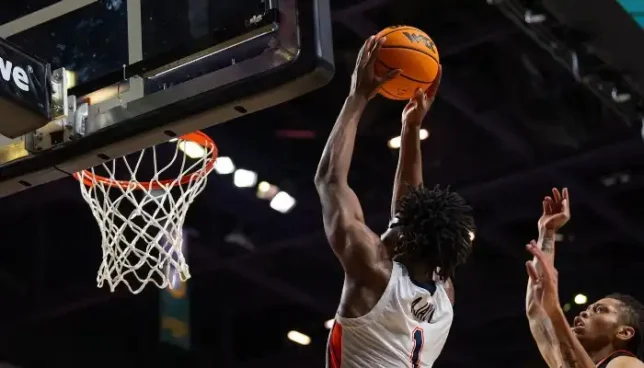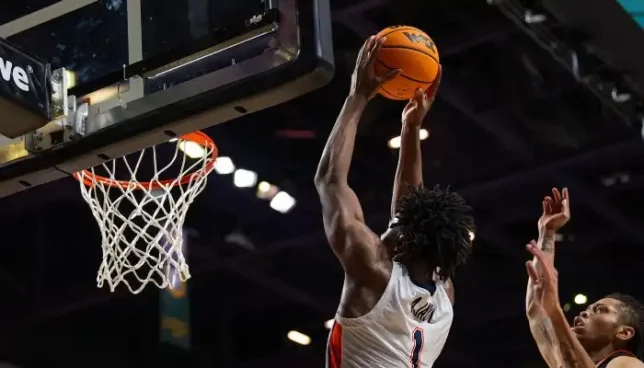Basketball is a game that has fascinated people for more than one hundred years. Its rapid pace, strategic plays, and unbelievable athleticism have made it an international sensation. But whether one is an avid follower or a beginner who has just picked up the ball, knowing the basics is what allows one to enjoy the game. This handbook will take you through a process that changes you from being an amateur who can easily be recognized by his wide-eyed innocence into a master of the game who can rule any court.

Hitting the Court Running: The Essentials of Basketball
Before we get into all those details about how this game works, let us start with some basic knowledge. The aim in basketball could be summed up as follows: score more points than your opponent by throwing a ball into their hoop. It involves two teams, each consisting of five players, competing on a rectangular court where they try to dominate offensively while having a strong defense.
To step onto any basketball court, there are a few things required. First, among these must-haves is your reliable basketball! A properly inflated one should ensure good grip and bounce. You will also need either indoor hardwood floors or outdoor asphalt courts as your playing surface, depending on whether it’s indoors or outdoors, respectively. Always wear comfortable athletic shoes with adequate ankle support to prevent injuries during fast movements and jumps. Finally, loose-fitting breathable clothes allow maximum mobility, especially when running around so much during games.
Warming Up Your Engine: Preparing for Success
Just like any other physical activity, proper pre-game preparation is also critical here. Before you hit that court, spend 5–10 minutes doing dynamic warm-ups, i.e., light jogging, jumping jacks, or arm circles, that will get your blood pumping and elevate your heart rate. Remember to do some gentle stretches to loosen up muscles and improve flexibility. This not only enhances performance but also significantly reduces the likelihood of injury.
Mastering the Fundamentals: Building Your Basketball Arsenal
Now that you’re prepared, let’s examine some essential skills that will enhance your overall performance.
- Dribbling: This is the art of maneuvering a ball while maintaining control. Practice dribbling using both hands (left and right), ensuring that your head is always up, and constantly surveying the court for opportunities. Develop this skill at varying speeds, as well as incorporate changes in direction to go past defenders.
- Shooting: Nothing feels better than sinking those shots every player dreams about. Learn how to shoot correctly: feet shoulder-width apart, knees slightly bent, and holding the ball comfortably above the head with elbows tucked in. Focus on smooth follow-through after releasing the ball, ensuring the correct arc and rotation.
- Passing: Good teamwork starts with a good pass. Learn the three main types of passes: chest pass for short distances, bounce pass when navigating around defenders, and overhead pass when making long-distance throws. Accuracy and timing are very important; a well-placed pass can create scoring chances for teammates.
- Defense: A solid defense can neutralize any offense. Find out how to do it right by mastering a proper defensive stance characterized by a low center of gravity, which allows quick reaction times. Shuffle your feet so as not to lose sight of the opponent; anticipate their moves, then block shots or passes whenever possible.
Understanding the Game: Beyond the Ball
Although dribbling and shooting may be considered foundational elements, there is much more depth involved in becoming truly skilled at basketball.
- Offensive Tactics: A great offense relies heavily on coordination between various players who must work together seamlessly but also can think quickly on their feet.
- Spacing: Treat the court as if it were a chess game. Players must maintain spacing to create passing lanes, prevent congestion around the hoop, and create opportunities for teammates to drive or shoot.
- Ball Movement: It’s easy to neutralize a stagnant offense. Dynamic ball movement keeps the defense guessing and creates scoring chances through open shots, backdoor cuts, and mismatches.
- Player Positioning: The flow of the offense is dictated by positioning. Guards should have the ability to initiate the offense, wings need to create scoring opportunities, and big men must establish a strong presence in the paint—all while maintaining good spacing.
- Defensive Strategies: Any winning team often relies on a strong defense as its foundation. There are three main defensive approaches:
- Man-to-Man Defense: Each player is given a specific opponent to guard throughout the game. This strategy requires constant communication and focus to stay glued to your matchup.
- Zone Defense: Players guard areas of the court rather than specific players. This strategy can be effective against teams with a great outside shooting presence.
- Trapping: Double-teaming an opponent in hopes of forcing a turnover is classified as a high-risk, high-reward strategy. It can disrupt offensive flow, but timing and execution must be precise so as not to leave shooters on the perimeter wide open.
- Communication and Teamwork: Basketball is fundamentally a team sport. Vocal communication on both ends of the floor should be encouraged at all times; calling out screens, switches, and offensive sets keeps everyone on the same page defensively while minimizing breakdowns.
Honing Your Skills: From Drills to Scrimmages
Being well-rounded as a player is crucial for success on any basketball court. Practice makes perfect, so here’s how you can structure your sessions for optimal growth:
- Structuring Practice Sessions: Establishing a clear goal for each practice session helps to remain focused and motivated. Whether it’s tightening up footwork on defense or improving shooting form, dedicate time towards individual skill development before integrating those skills into game-like drills.
- Drills for Mastery:
- Dribbling: Dribbling drills can range anywhere from basic weaves and crossovers to more complex behind-the-back moves. Practice dribbling with both hands at different speeds and under duress so that you feel comfortable handling the ball in any situation.
- Shooting: Shooting is an art form within itself. Mastering proper shooting form (including footwork, hand positioning, and follow-through) should be a top priority. Layups, jump shots, and free throws are all necessary shots to work on.
- Passing: The lifeblood of any offense starts with an accurate or quick pass. Practice various pass types, including chest passes, bounce passes, and overhead passes, with a focus on accuracy and anticipation.
- Defense: Defense is often said to be what wins championships, not just blocking shots or stealing balls. Develop lateral quickness, staying in front of your man, footwork, and anticipation skills when reading the offensive side of the game.
- Scrimmage Games: Scrimmages offer a great opportunity for you to test your abilities against other players in competitive settings, which can lead to personal growth. It also allows one to work on decision-making under pressure while implementing offensive and defensive strategies learned during practice sessions, not forgetting about the game conditioning aspect too!
Mental Toughness: The Champion’s Mindset
Basketball is more than just physical ability; mental strength plays an equally important role, if not even bigger!
- Developing Mental Toughness: Being able to stay focused, composed, and confident under pressure is key. Learn how to deal with frustration, manage mistakes, and adapt when faced with different game situations.
- Visualization Techniques: Visualization can boost performance. Just shut your eyes and picture yourself making perfect shots, getting steals, or winning games for your team. This mental practice enhances confidence and sharpens focus.
- Conditioning for Success: Basketball is a sport that requires supreme physical fitness. Develop a workout program that enhances stamina, quickness, and agility, to achieve overall physical preparedness. Sprints, plyometrics (jump training), and weightlifting are some examples of exercises that could be part of such a plan.
Learning from the Legends: Inspiration and Strategies
Throughout history, basketball has had many great players who have inspired others. Here are some tips on how you can learn from them:
- Study the Pros: Watch game tapes of professional athletes who possess skills similar to what you’re trying to develop in yourself. Look at their technique, footwork, and decision-making abilities during different situations within games.
- Breakdown the Game: Pay attention to both offensive and defensive strategies used by successful teams.
- Seek Mentorship: Find experienced coaches or mentors who will help guide your progress as a player.
Overcoming Obstacles: The Road to Success
Becoming good at basketball is not easy, but it’s worth it! Here’s how to keep going when things get tough:
- Embrace Setbacks: Everybody makes mistakes; learn from them! Stay flexible enough so that if something isn’t working out right away, try another way until success comes.
- Perseverance is Key: Success takes time; don’t give up too soon because sometimes it doesn’t come quickly. Keep working hard on skill development, even if challenges come along the way!
- Find Your Support System: Surround yourself with positive people who believe in you, including teammates, coaches, or friends!
Setting Goals and Tracking Progress: Measuring Your Success
Goals provide direction and fuel motivation. Here’s how to set effective goals and track your progress:
- Short-Term and Long-Term Goals: Set targets for the near future (e.g., improve free throw percentage by 5% in a month) as well as more long-range ones (e.g., make the varsity team within a year).
- Track Your Performance: Measure success with numbers, such as shooting percentages or completion rates on dribbling drills; game statistics can also be helpful.
- Celebrate Milestones: Recognize when you achieve something important, no matter how small it may seem at first. Take pride in your accomplishments to foster positive habits that will lead to even greater successes in the future!
Conclusion
This guide gives you what you need to become great at basketball! Remember, though, that passion alone won’t cut it; hard work and a constant desire for improvement are also necessary if one wants to succeed in anything they do. Embrace challenges, relish victories, and never cease learning from our predecessors on this incredible life journey! Tell others about your experiences playing sports too, because talking is good for sharing knowledge, which helps everyone grow together as individuals while pushing themselves beyond the limits necessary for greatness!

